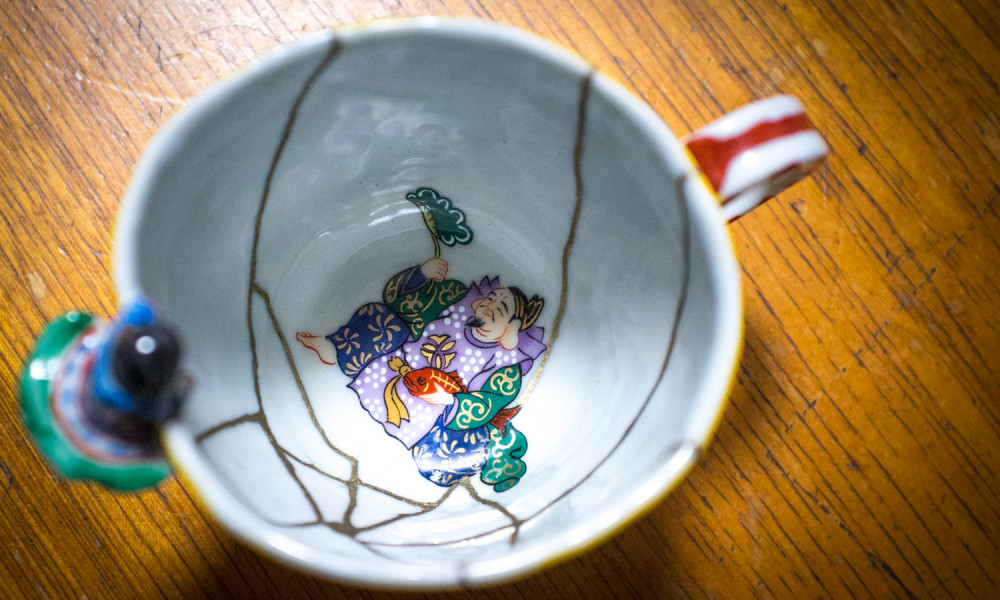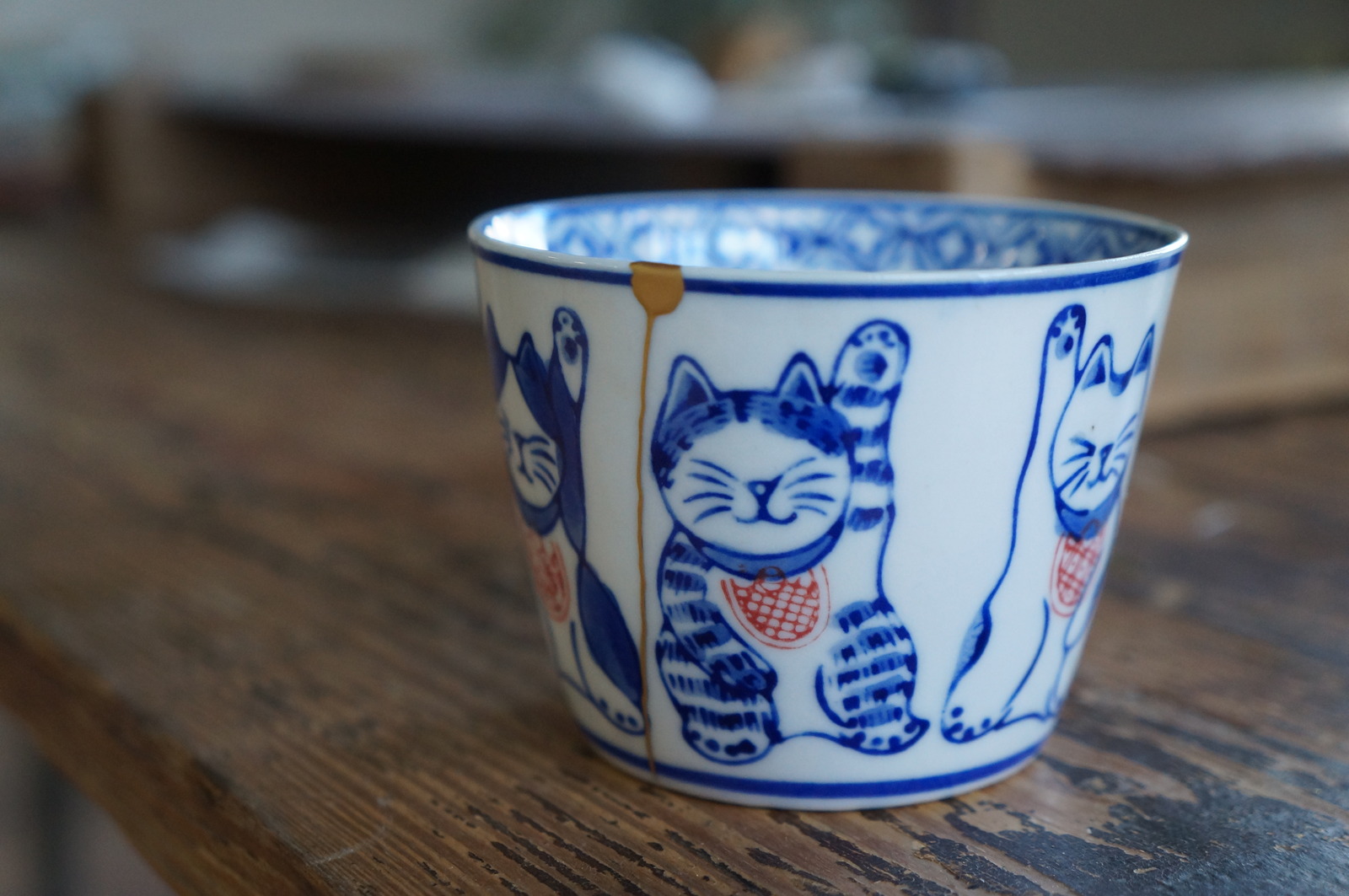Kintsugi. Japanese art of restoration

The art of restoration appeared in Japan so long ago that it is already impossible to name the exact date or even the century of its occurrence. As for the kintsugi, this is a relatively "new" technique, it is about 500-600 years old. Its essence lies in the fact that it is necessary to repair the damaged object with the obligatory preservation of all its cracks and imperfections, because they, like wrinkles on the person's face, are an integral part of history, and should not be forgotten or disguised. One of the versions says that kintsugi appeared in the XV century due to inept Chinese. According to legend, the Japanese shogun Asikaga Yoshimasa defeated his favorite tea bowl and ordered her to be sent back to China to the local masters to fix it. They returned the vessel with the ugly iron staples. The shogun was upset and gave the case to the Japanese restorers to find more aesthetic methods. The Japanese combined the existing technique of restoration with the technique of maki-e - painting with gold powder on the varnish. They glued the bowl, and left the gold "scars" in place of the seams. So there was kintsugi, which became the most popular technique of restoration for the next centuries, and has enjoyed incredible success to this day. They say that some even deliberately break valuable porcelain to restore it with gold seams. Photo tenaraido.jp
Photo tenaraido.jp
In the era of consumption, when old things are ruthlessly thrown away, and new ones are bought on an unprecedented scale, the people of the Land of the Rising Sun remain faithful to their traditions and carefully restore a valuable rarity. The main task of the Kintsugi is not only to repair the old object, it is a whole philosophy that is similar to the current of Wabi-Sabi (modest simplicity) and consists in accepting flaws and imperfections. And while we try to forget our mistakes and failures, get rid of shortcomings or, at the very least, disguise them, the Japanese are working to make them an adornment and dignity. It does not matter whether it is a person or a ceramic vase. It is important not to return the original "ideal" view to the object, but to preserve its history, with all the failures, downsides (in a literal and figurative sense) and failures. And, oddly enough, the result is often much superior to the source. Every scratch, every trace of wear, every chip is memories of people and events. And it turns out that in kintsugi there is a double meaning: first, the thing can be reused after restoration, and the underlined repair traces remind that failure is not the end, but the beginning of something new and often even better. The Japanese believe that by giving a new life to broken dishes, they fill it not only with a new story, but with the soul itself.
Photo andoya.petit.cc
In the process of the most common type of restoration kintsugi (it is called hibi, "cracks"), use a special varnish, obtained from the juice of the varnish tree Urusi. It is mixed with gold, silver or platinum powder, and then polished to a glossy gloss. The tree of Urusi is quite toxic, if not poisonous, so the extraction of varnish is associated with some danger. But the product itself does not affect - as soon as the varnish dries, its toxic properties evaporate, and the product becomes absolutely safe. After that, it can be used even for meals. Sometimes the fragments are not fastened with lacquer, but with gold clips. If the broken ceramic product lacks small parts, they can be "filled" with gold enamel (this technique is called kane no kintsugirai). And if large fragments are lost, they are replaced by other parts that fit in shape, but not always in texture and color. This kind of kintsugi is called ebizugi, which literally means "docking". Photo nonversus.jp
Photo nonversus.jp
In modern times the technique of kintsugi was actively used not only in Japan, but also in China and Vietnam, but today it has gained wide popularity all over the world. Japanese art of restoration is applied not only in relation to ceramic dishes, but also to decor items, ceramic tiles and even furniture, and gold is often replaced with a different color. And let Europeans seldom invest in the process the philosophical meaning that Japanese masters originally endowed, the very fact that this technique is widely spread and fascinated all over the world shows that we are already ready to look deeper and wider, try to preserve history instead of get rid of it, replacing it with a new and often cheap and low-quality analog. On the example of inanimate things, kintsugi teaches us to accept ourselves as they are: with virtues and shortcomings, with flaws and imperfections, with successes and failures. Because they are part of our personal history, they make us stronger, enrich with experience and give wisdom. To strive for an ideal is good, but even better is to appreciate and respect history as it is. Photo kintsugi.chiaraarte.it
Photo kintsugi.chiaraarte.it
Cover photo thecupandtheroad.com





















